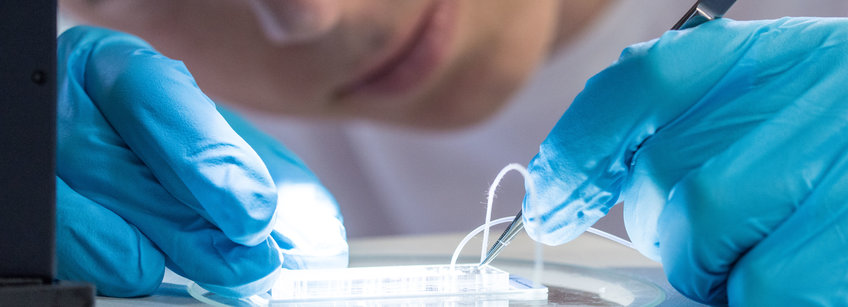
Molecular Basis and Evolution of Complex Traits
Adaptation occurs all around us. Our DNA is the product of millions of years of evolution. Our group aims to connect genetic variation with its phenotypic and evolutionary impact. We want to understand how the genome encodes for robust development, and yet retains ample flexibility to respond rapidly to selection.

To do so, we leverage uniquely informative systems like hybrid mice and selection experiments and apply (or invent!) cutting-edge genomic and stem cell techniques to chart the genetic circuitry of the genome as an dynamic system.
To track how selection operates in the genome, we sequence more than a thousand mice from the “Longshanks selection experiment” to make mice with longer legs. To map mouse species differences we developed in vitro recombination to circumvent the species barrier. To understand what makes Bloom Syndrome patient prone to cancer we used haplotagging to directly detect mitotic recombination events. By integrating these results, our goal is to understand how an organism works and evolves.
What We Aim to
Selected Publications
Meier, J.I.*, Salazar, P.A.*, Kučka, M.*, Davies, R.W., Dréau, A., Aldás, I., Box-Power, O., Nadeau, N., Bridle, J.R., McMillan, W.O., Rolian, C.P., Jiggins, C.D.†, Chan, Y.F.† (2021) Haplotype tagging reveals parallel formation of hybrid races in two butterfly species. (* co-first authors; † co-last authors). PNAS, doi: 10.1073/pnas.2015005118.
Castro, J.P.L.*, Yancoskie, M.N.*, Marchini, M., Belohlavy S., Hiramatsu, L., Kučka, M., Beluch, W.H., Naumann R., Barton, N.H., Rolian, C.†, Chan, Y.F† (2019) An integrative genomic analysis of the Longshanks selection experiment for longer limbs in mice eLife, (8):e42014. doi: 10.7554/eLife.42014. * co-first authors; † co-last authors
Lazzarano, S., Kučka, M., Castro, J.P.L., Naumann, R., Medina, P., Fletcher, M.N-C., Wombacher, R., Gribnau, J., Hochepied, T., Van Montagu M., Libert C., Chan, Y.F. (2018) Genetic mapping of species differences via “in vitro crosses” in mouse embryonic stem cells. PNAS 115 (14) 3680-3685; Online Early. doi: 10.1073/pnas.1717474115.
Chan, Y.F., Jones, F.C., McConnell, E., Bryk, J., Bünger, L., Tautz, D. (2012) Parallel selection mapping using artificially selected mice reveals bodyweight control loci. Current Biology. 22 (9): 794-800.
Chan, Y.F., Marks, M.E., Jones, F.C., Villarreal G. Jr., Shapiro, M.D., Brady, S.D., Southwick, A.M., Absher, D.M., Grimwood, J., Schmutz, J., Myers, R.M., Petrov, D., Jónsson, B., Schluter, D., Bell, M.A., Kingsley D.M (2012) Adaptive evolution of pelvic reduction in sticklebacks by recurrent deletion of a Pitx1 enhancer. Science (Article) 327 (5963): 302-305.
